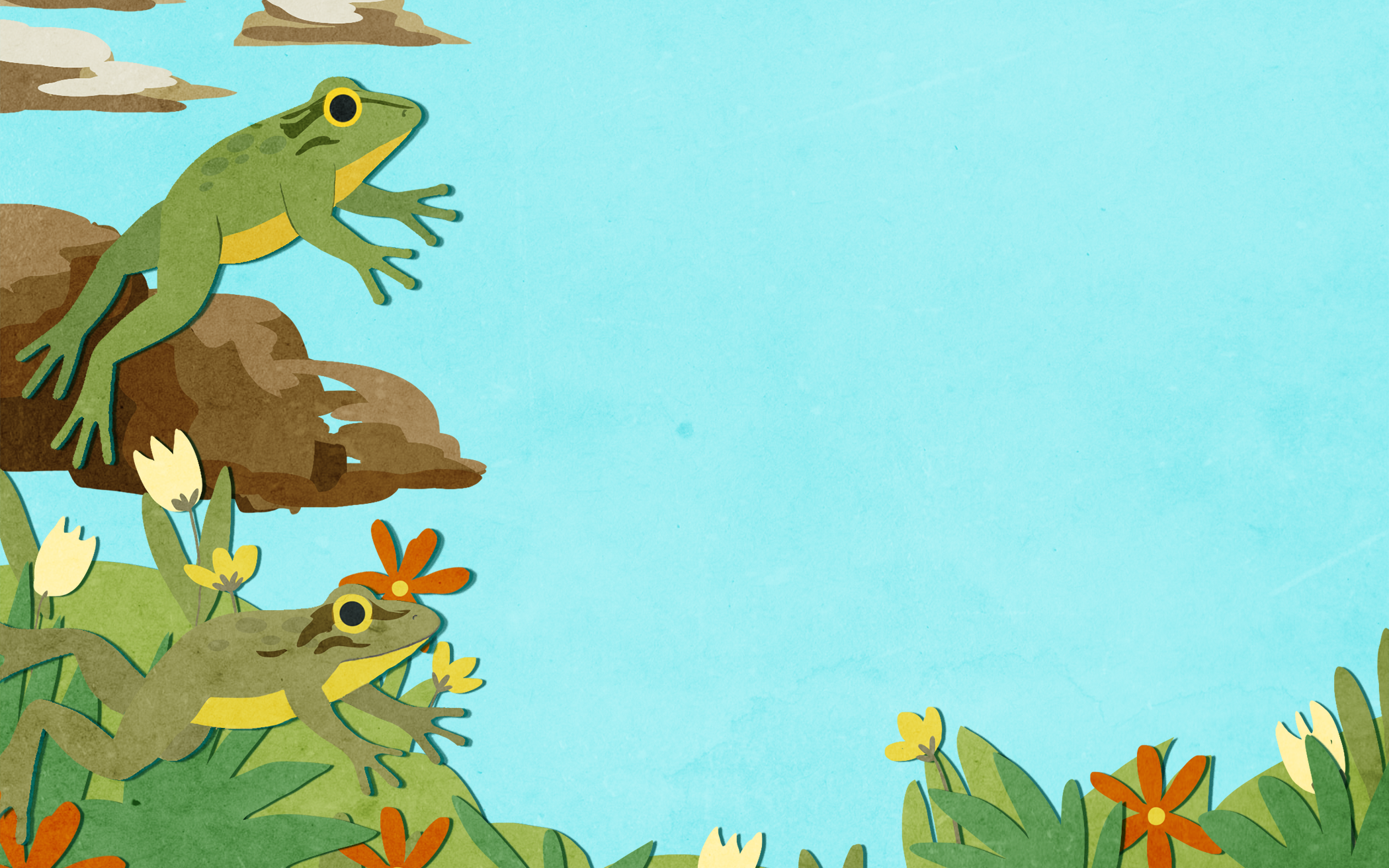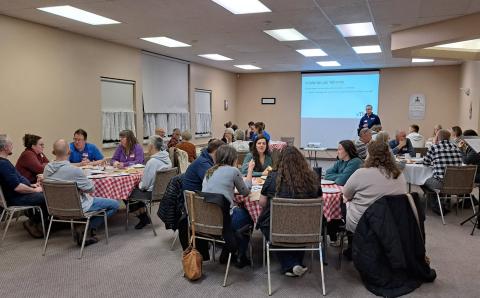Quack, quack, quack. My friend emerged from the bushes, binoculars in hand. “Do you hear it? The quacking?” he asked. He was determined to find the ducks that were quacking in the middle of the forest.
I did hear it—tiny voices in the distance making a chaotic “kvaak kvaak,” as if a thousand mallards were roaming around the woods. I joined my friend, and we began searching for the sound, only to have them stop whenever we got close. We decided to sit and wait to see if they might return in the quiet. Slowly they started again. First one, then another, then hundreds of tiny voices emerged—but nothing to be seen. A small movement caught our attention, and we watched a tiny tan creature with a black mask hop past. We looked at each other and burst out laughing. The sound wasn’t ducks; it was frogs—wood frogs, to be exact.
These masked creatures roam most of the forests of Canada and the northeastern United States and can be found as far north as the Arctic Circle. Their call, as we discovered, sounds a lot like quacking ducks. They can be heard in the early spring wherever shallow temporary ponds can be found.
Their biggest claim to fame is being able to survive temperatures as low as -14 degrees C (5 degrees F). The water in their bodies freezes, and they appear to be dead, with no heartbeat, breathing, blood circulation, or detectable brain activity. Normally when water freezes, ice crystals form. In most creatures this would burst cells and kill tissue. But God created the wood frog to have a kind of antifreeze in their blood that prevents this from happening, allowing them to thaw in warmer weather and hop away unscathed.
After their winter ordeal, wood frogs migrate to temporary ponds where the males sing their quacky chorus to attract females. A female will lay between 200 and 1,000 eggs in a large, jelly-like mass on plants under the water, and within a week mating is done for another year and the forests are quiet again.
Inside the eggs, tiny tadpoles are forming. How quickly they develop depends on how warm the water is. Once the tadpoles hatch, they wriggle about the pond, eating plants, algae, and even other tadpoles! As a tadpole grows, tiny legs begin to appear, first in the back and then in the front, and its tail shrinks until it is completely gone.
Adult frogs (as well as toads and salamanders) breathe through their skin, so they are very sensitive to pollution in the water. If you are ever privileged enough to catch a frog, make sure your hands are wet and free from insect repellent, hand cream, or sunscreen. These chemicals could be absorbed into their skin or clog up their pores, causing them to get sick or die.
Most frogs these days are not doing well. Water pollution, less protection from the sun’s ultraviolet rays, and human development around their homes is a huge problem.
You can help these beautiful, quirky parts of God’s wonderful creation in many ways:
- Leave (or create) temporary ponds on your property.
- Keep chemicals out of waterways.
- Observe, record and report frog populations on your property using the iNaturalist (iNaturalist.ca or iNaturalist.org) and/or Frogwatch (naturewatch.ca) citizen science sites.
- If you see frogs, don’t touch them. Just enjoy looking at them!.
About the Author
Cindy Verbeek lives in Houston, B.C., where she works for A Rocha Canada. She has been working on creation care issues since 1993 and is a member of Telkwa Community Church.









